Rebecca George
During the COVID 19 global pandemic we have retreated into the sanctuary of our homes and have been forced to embrace a slower pace of life. Our homes also became our classroom, our workplace and our digital window to the outside world. We connected with others online, allowing people virtually into our homes, creating a distant intimacy.
Covid 19, R=1.5, 2 & 3 is a home lighting sculpture,
visually representing exponential growth such as the spread of an infectious disease. The rate of spread depends on the reproductive rate
(R) of the virus. If R > 1, numbers will grow and the virus will spread. Numbers can start small and initially seem under control, then
numbers increase rapidly. Starting with one crochet stitch in the centre of the work, the work grows slowly initially then at a rate that
cannot be contained. Each stitch represents a case of COVID 19 and the number of stitches grow at a rate that depends on the R number. In
each of the 3 shapes, the lighting edge is 3 metres long. Crochet was traditionally done by women in the home. All that’s needed is a hook
and yarn (or wire).
IMAGE > Rebecca George, <em>Covid 19 R=1.5, 2 & 3</em>, 2021, recycled copper wire, stainless cable and EL wire, 20 x 40 x 40 cm. Image courtesy of the artist.
+ Buy Now
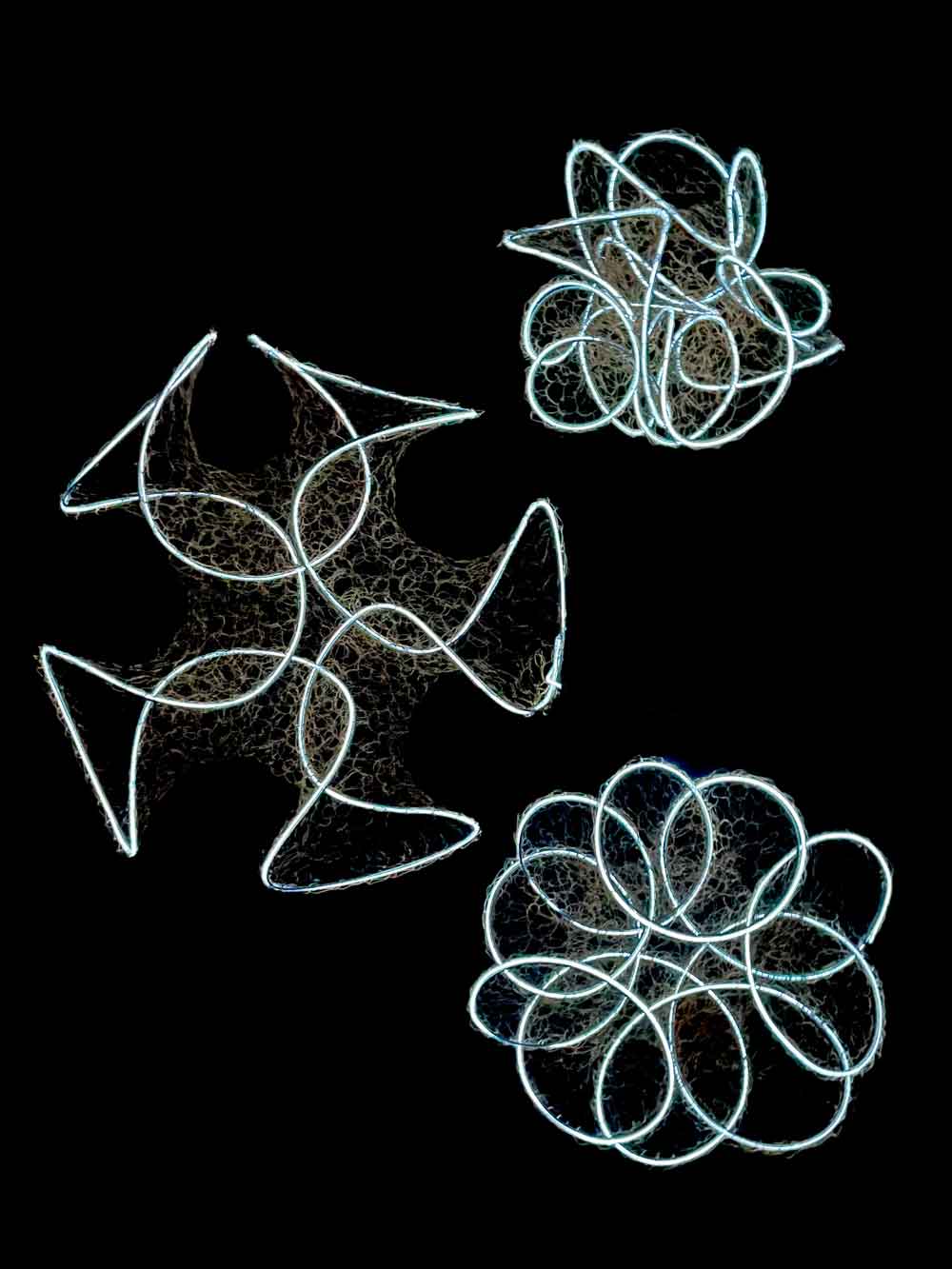
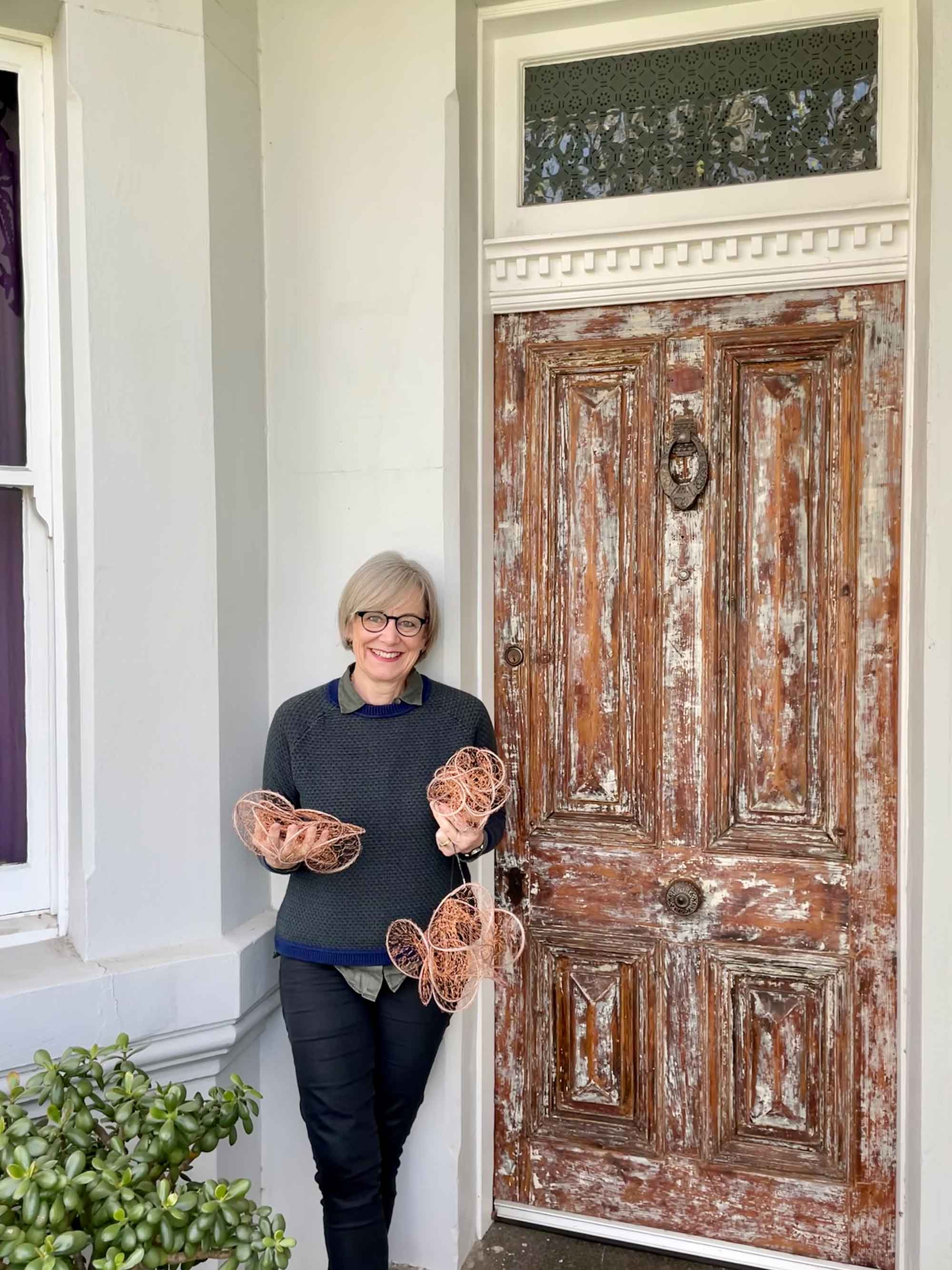
I used to visit art galleries and exhibitions to learn about design. Since lockdown I have been spending more time online and on social
media where I have connected with a much wider range of designers. Visible mending, crochet amigurumi, clothing, yarn dyeing, sculpture and
art are all areas of design I’m exploring, with slow, sustainable, handmade and local being increasingly important to me.
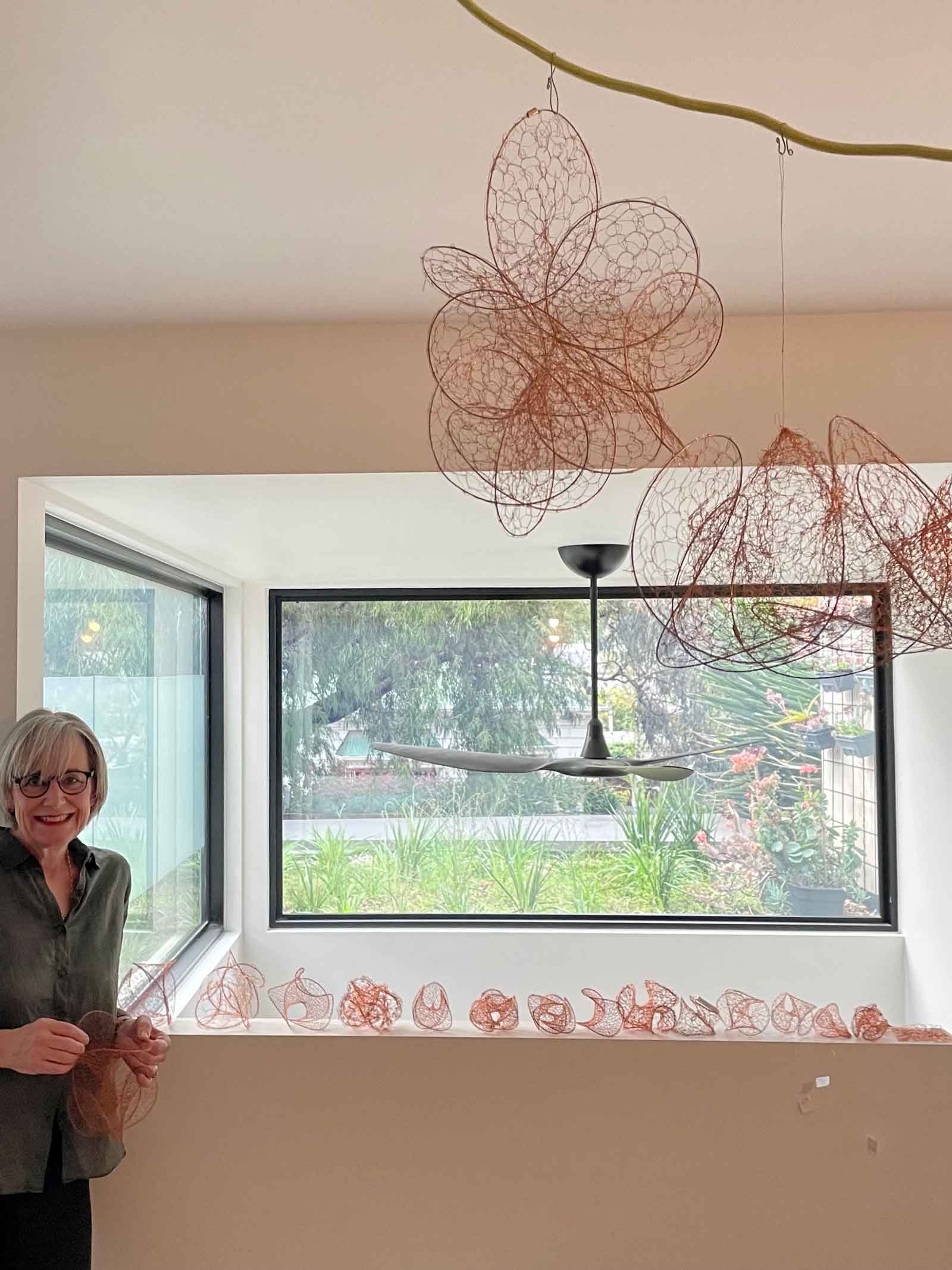
If it were not for lockdowns, I wouldn’t be an artist today. My usual work of training and consulting in manufacturing industries came to a
complete stop at the start of the pandemic. I was looking for things to do, so applied for a volunteer position at SisterWorks to teach
crochet. Designing online crochet classes and items made me think about crochet in more detail. It also gave me the perfect excuse to
crochet more, so my lockdowns became a lot more fun. I explored crochet shapes and bought a book by Daina Taimiņa, a Latvian mathematician
who used crochet to create hyperbolic geometric shapes that were hard to visualise in 2D. I saw patterns between hyperbolic shapes and the
growth of a virus such as COVID 19, and started to depict different rates of growth or R numbers using crochet stitches. I used materials I
had at home, including stripping old electrical cables for the copper wires.
I’m lucky to have the CBD within my 5km bubble and started to notice that if I looked up I could see beautiful buildings. I love the way
building fashion changes over the years.
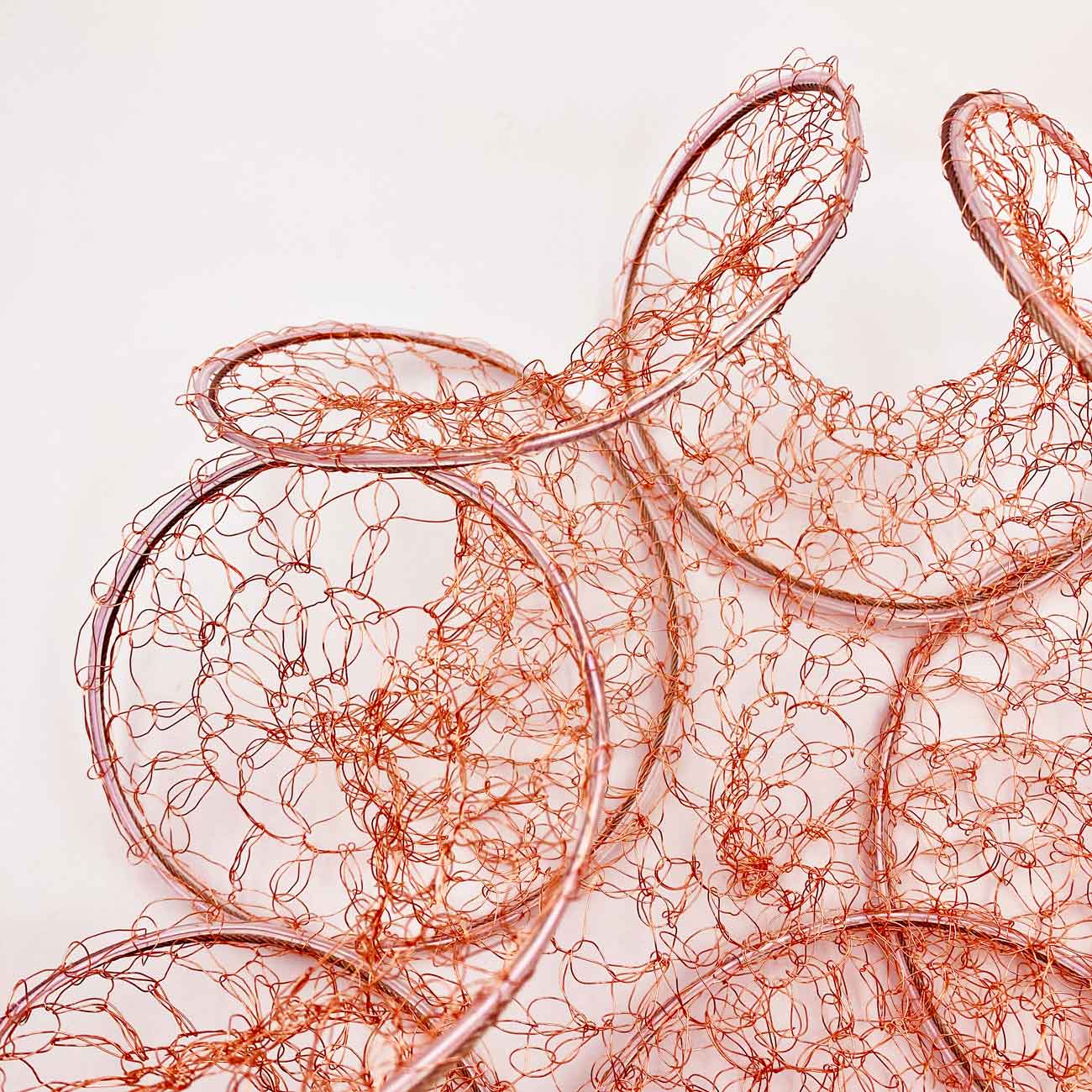
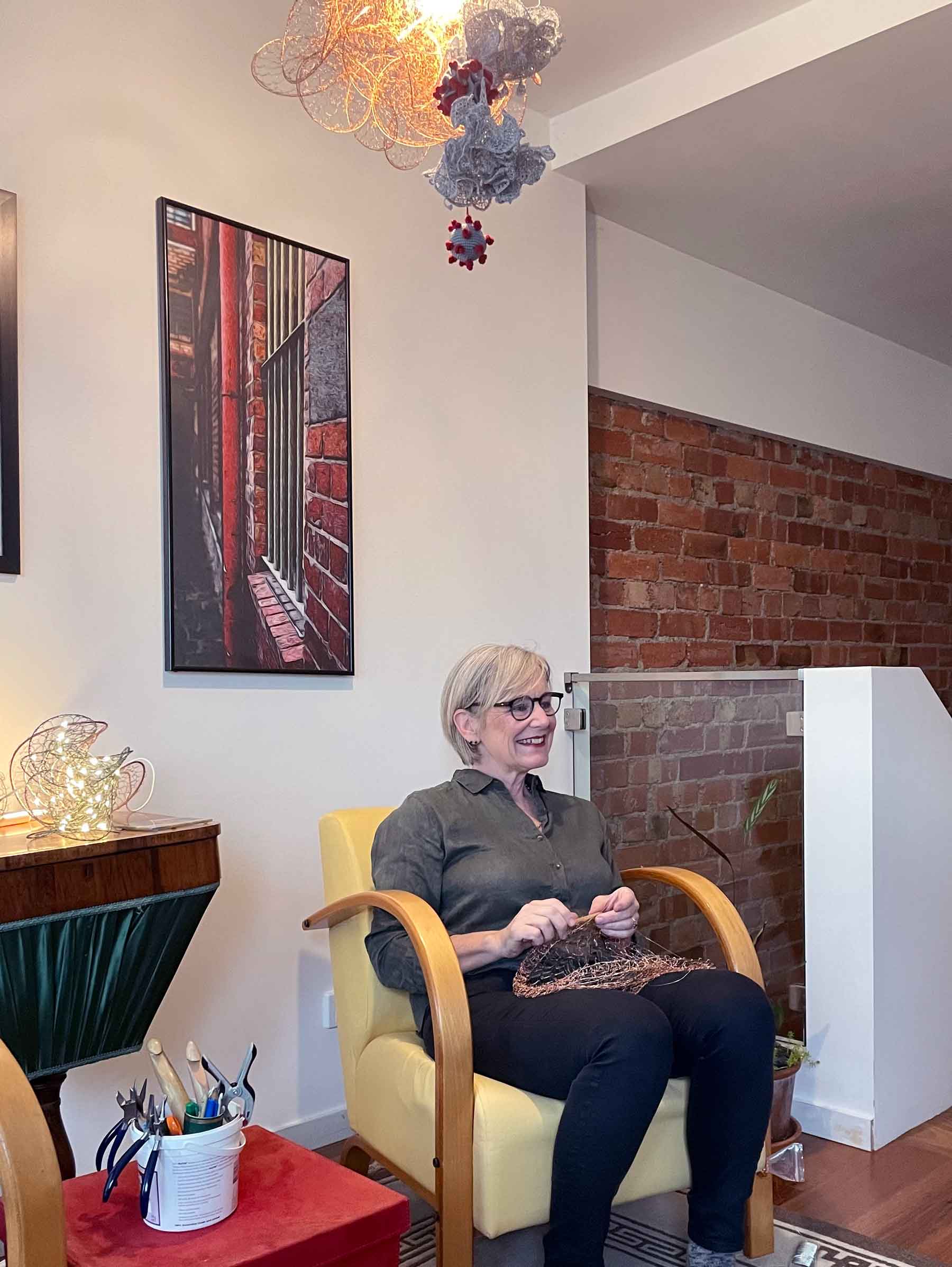
My favourite room is my home office, now studio. It’s bright and looks out over green roofs to trees and sky. It’s also a mezzanine level
connected to the main living area but separate enough so I don’t have to keep tidying up.
Hanging in the hall are my rowing oars, my favourite design object in our house. They remind me of my student days, the sweat involved in
winning them, and how good rowing has been over the years since. These oars are both a different shape and made of different material to the
oars we use today, showing how product design constantly evolves.

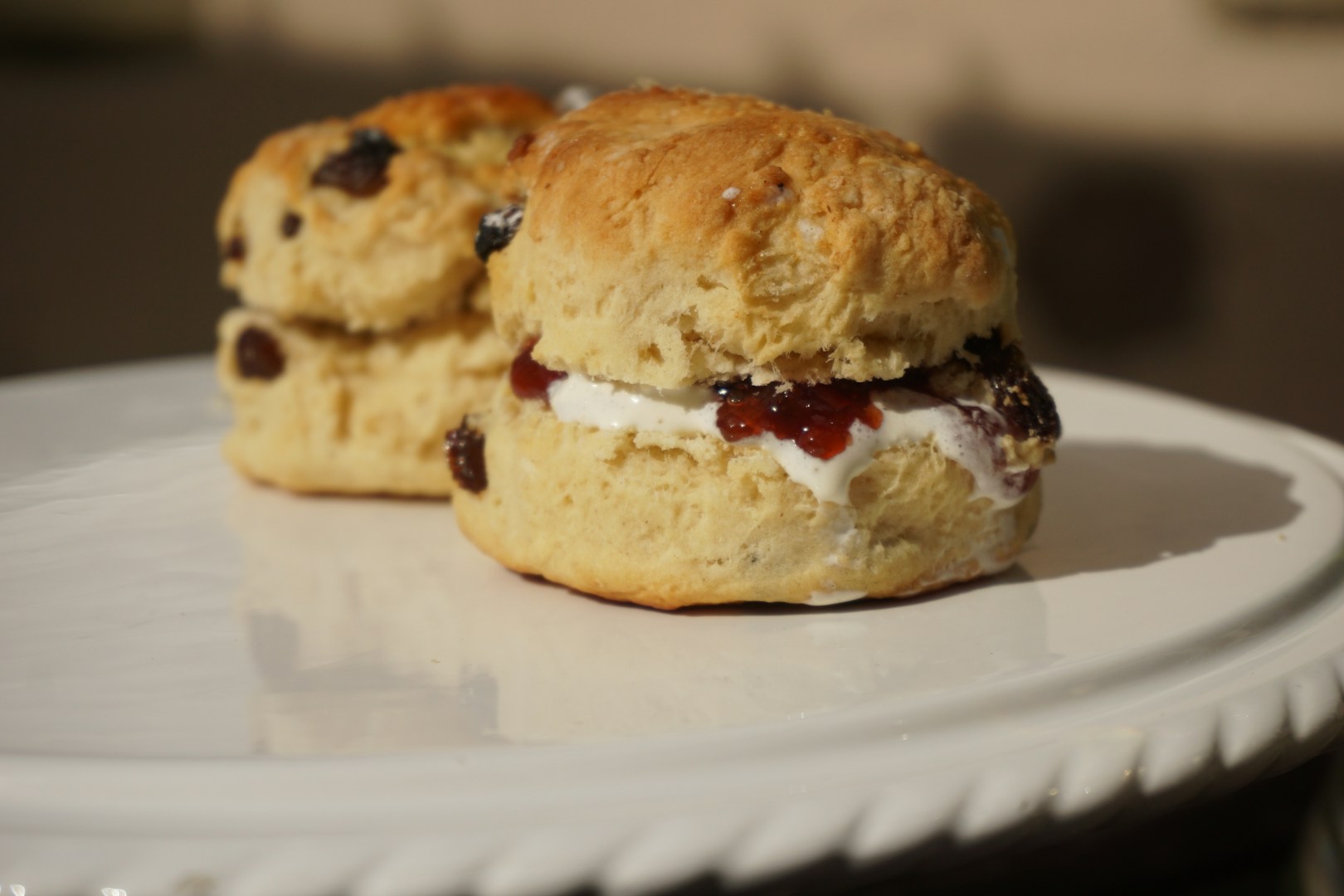
My favourite recipe is scones. These scones are so quick and simple and briefly make me feel like a domestic goddess. All you need is
some cream, flour and fizzy water (I have a sodastream). There is a similar recipe online using lemonade, but with water I can pretend
these are healthy as there’s no sugar.
Mix all ingredients until they come together. Don’t overmix and it’s OK if it looks a bit shaggy. Turn onto a board and press into a disc about 2cm thick. Using a cookie cutter (or a glass if you don’t have one) cut out round shapes. Tip – don’t twist the cutter as the edges will rise better if you go straight down and up. Place on a baking sheet and bake in a 180 deg oven for about 20 minutes or until golden on top.
Serve with butter, jam and cream.
For savoury scones, just add at the start whatever you feel like. These scones don’t keep well, so unfortunately you’ll need to eat them all straight from the oven.
IMAGES [Top to bottom] > All images courtesy of the artist. Recipe image source: unsplash.
+ Visit Rebecca George's
Instagram account
+ Visit Rebecca George's
Website